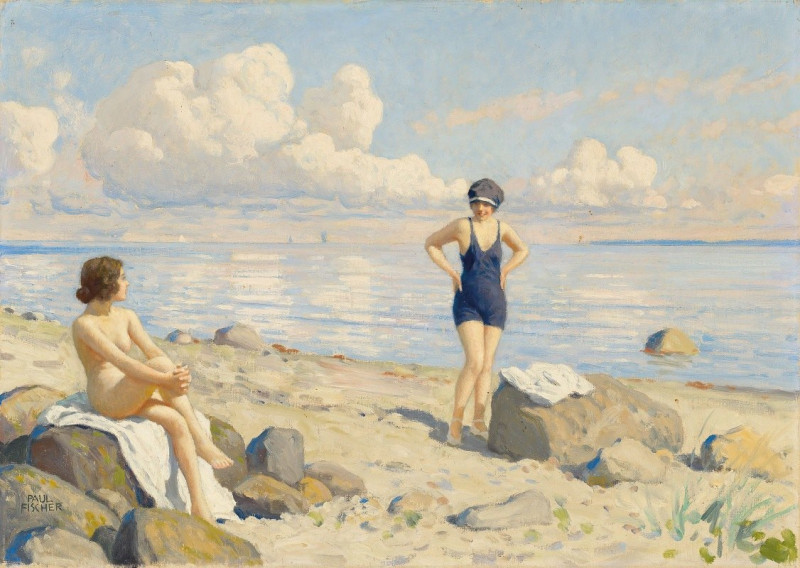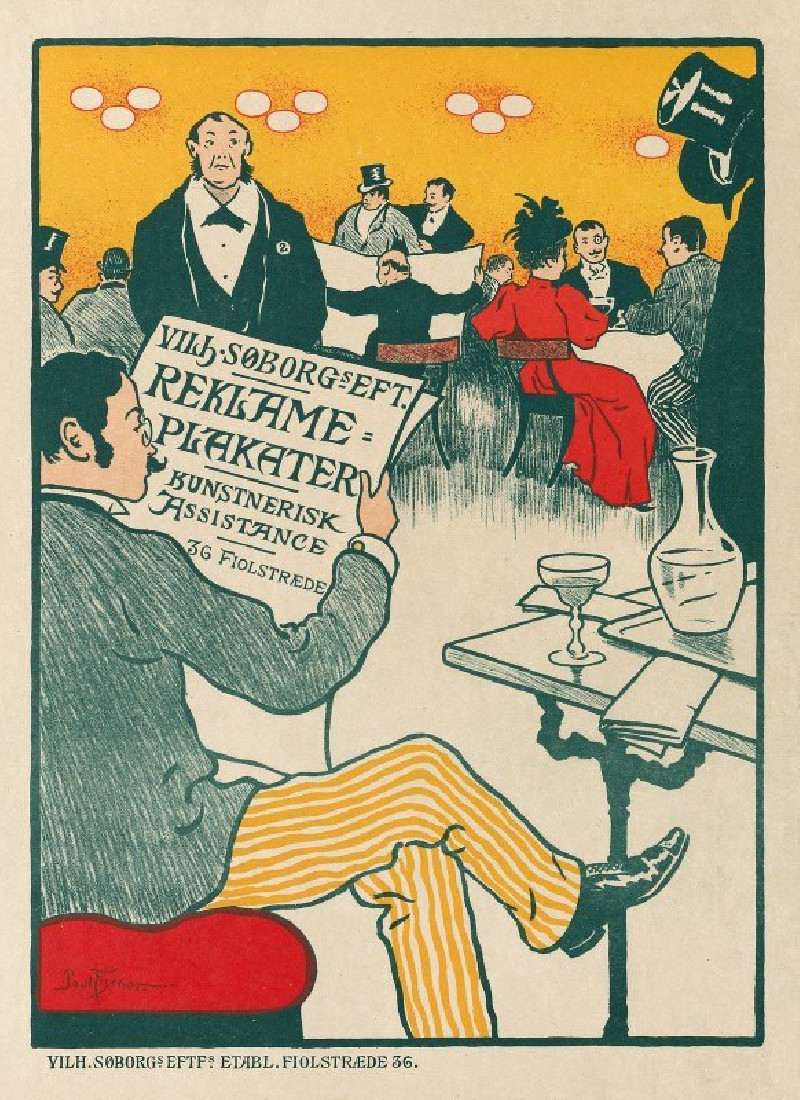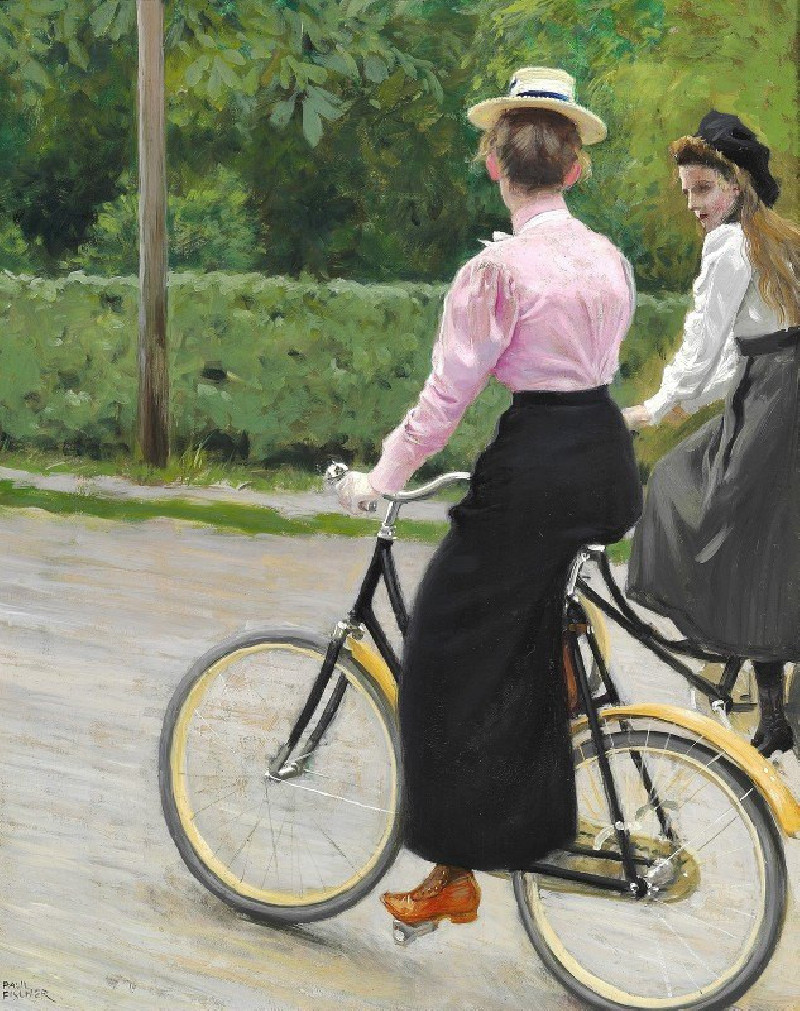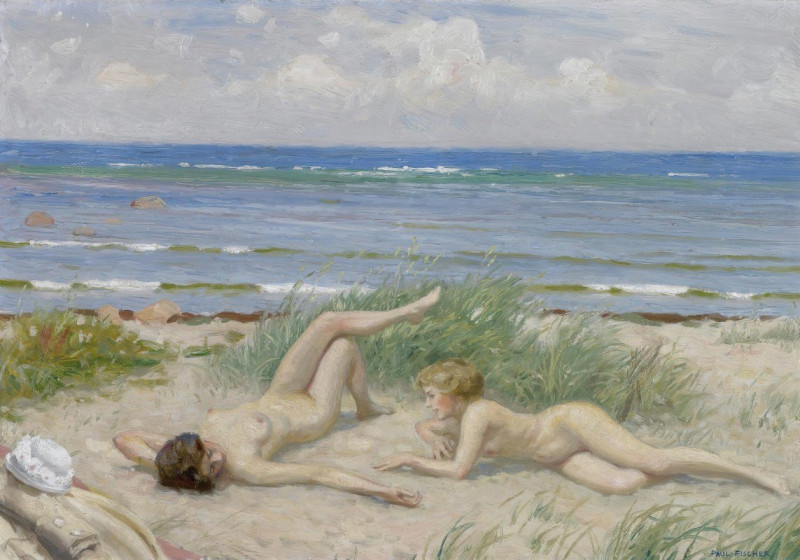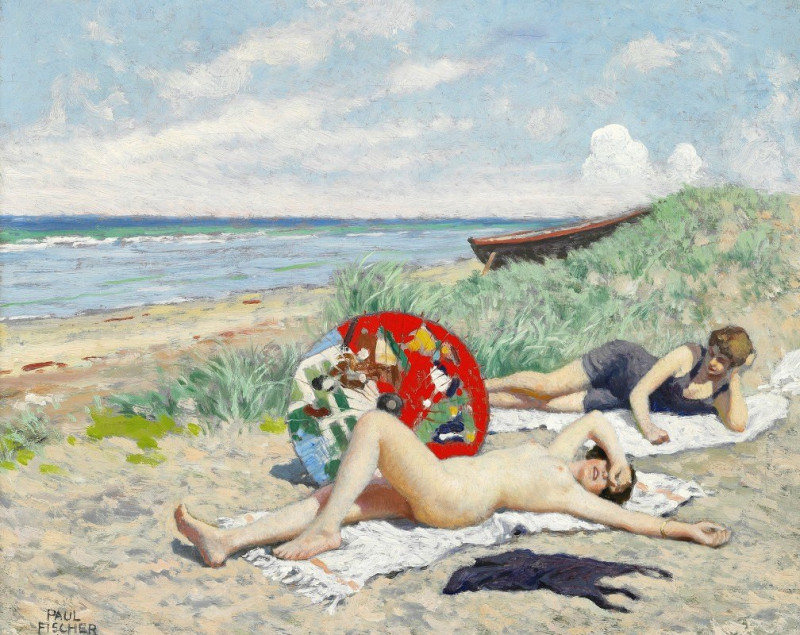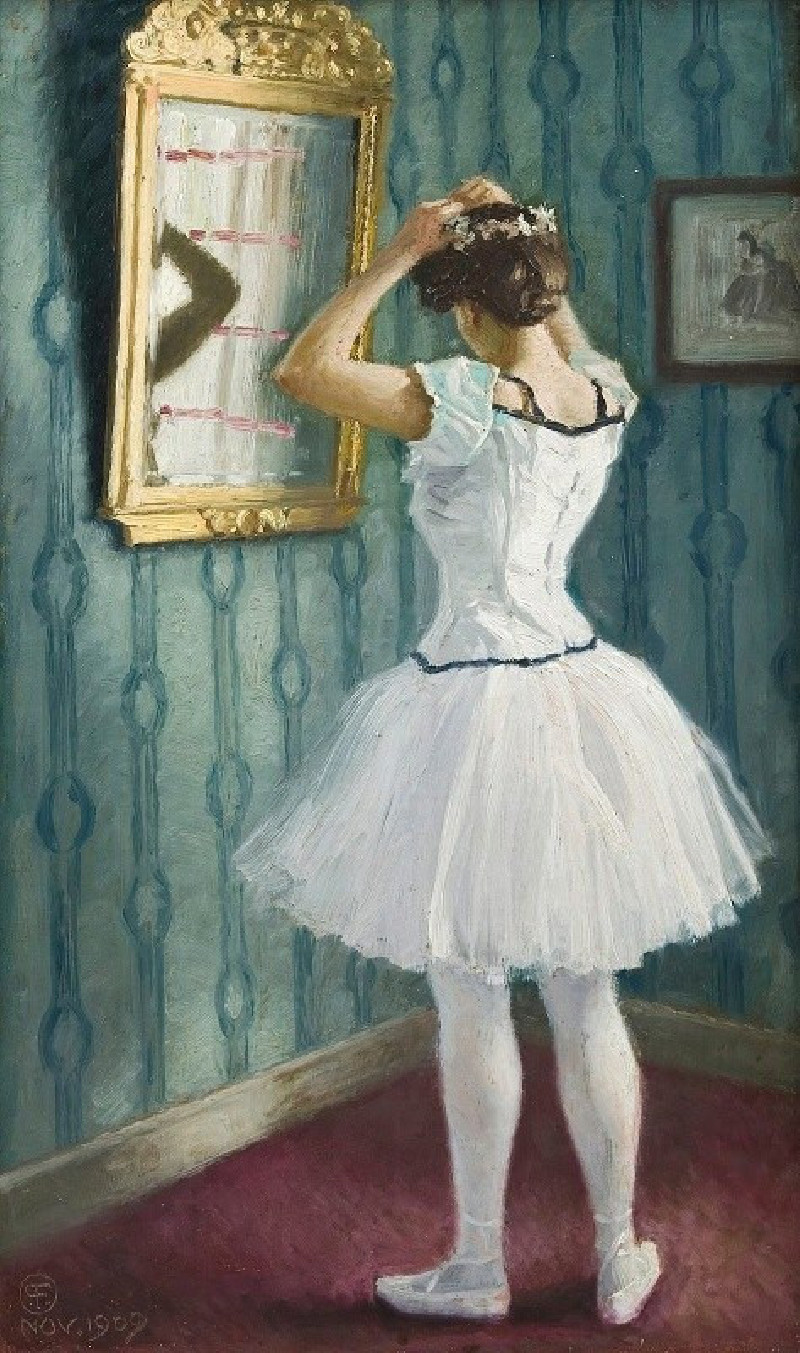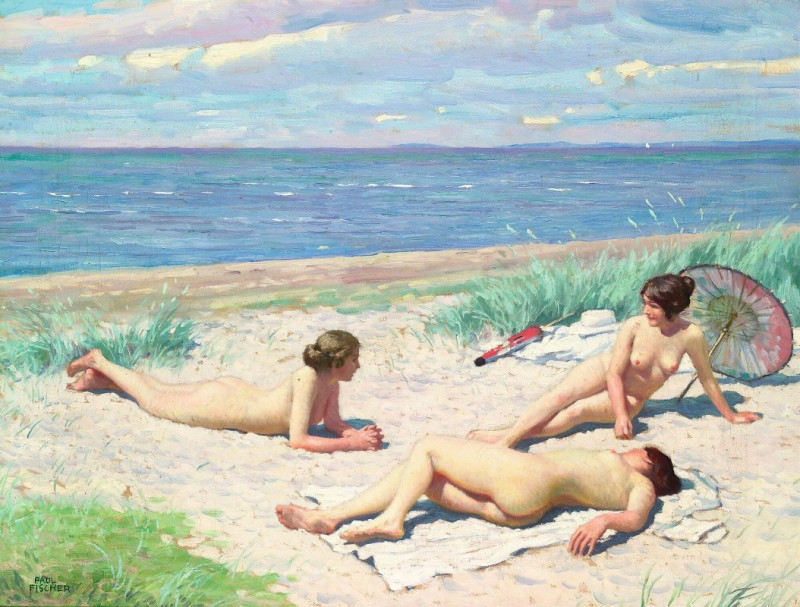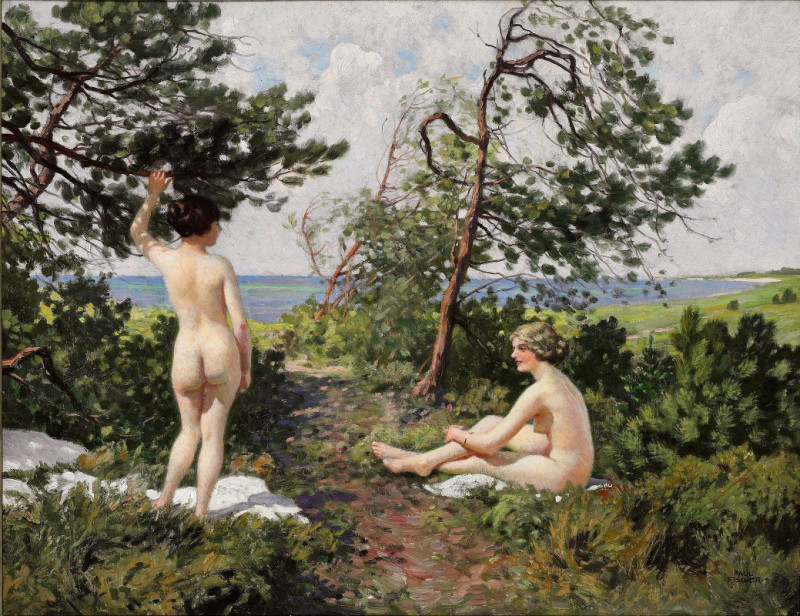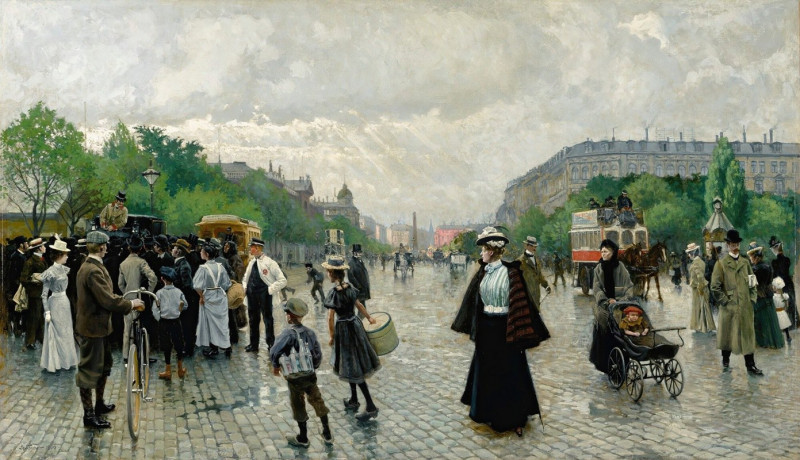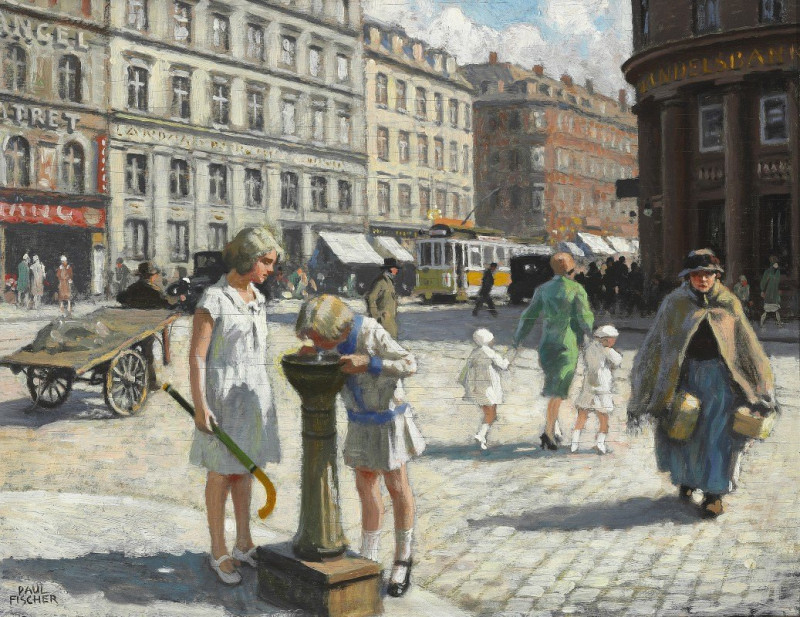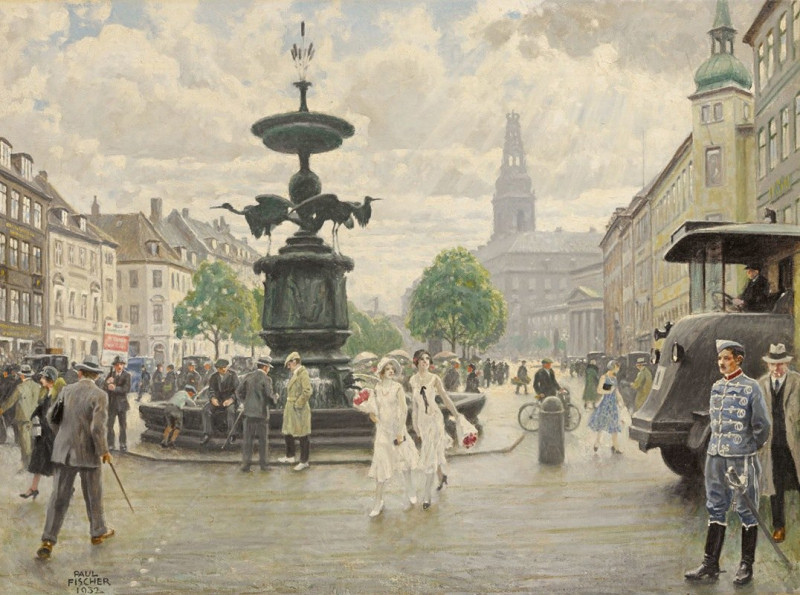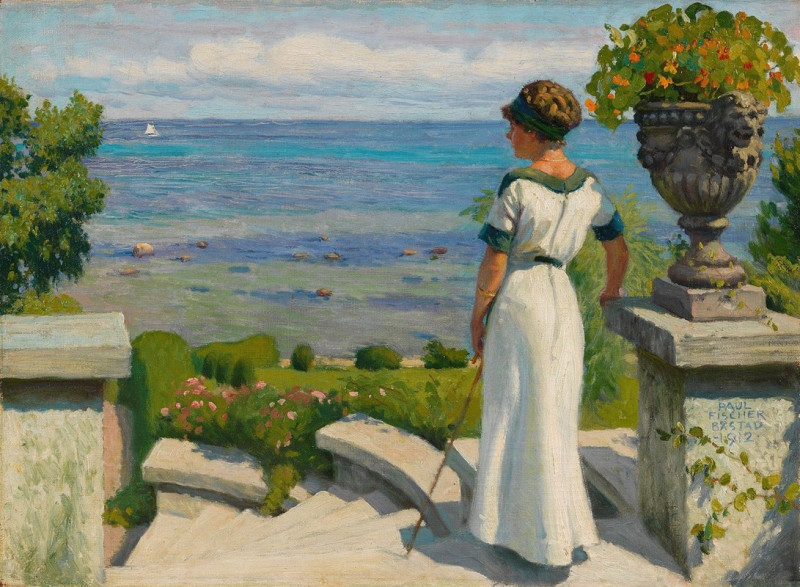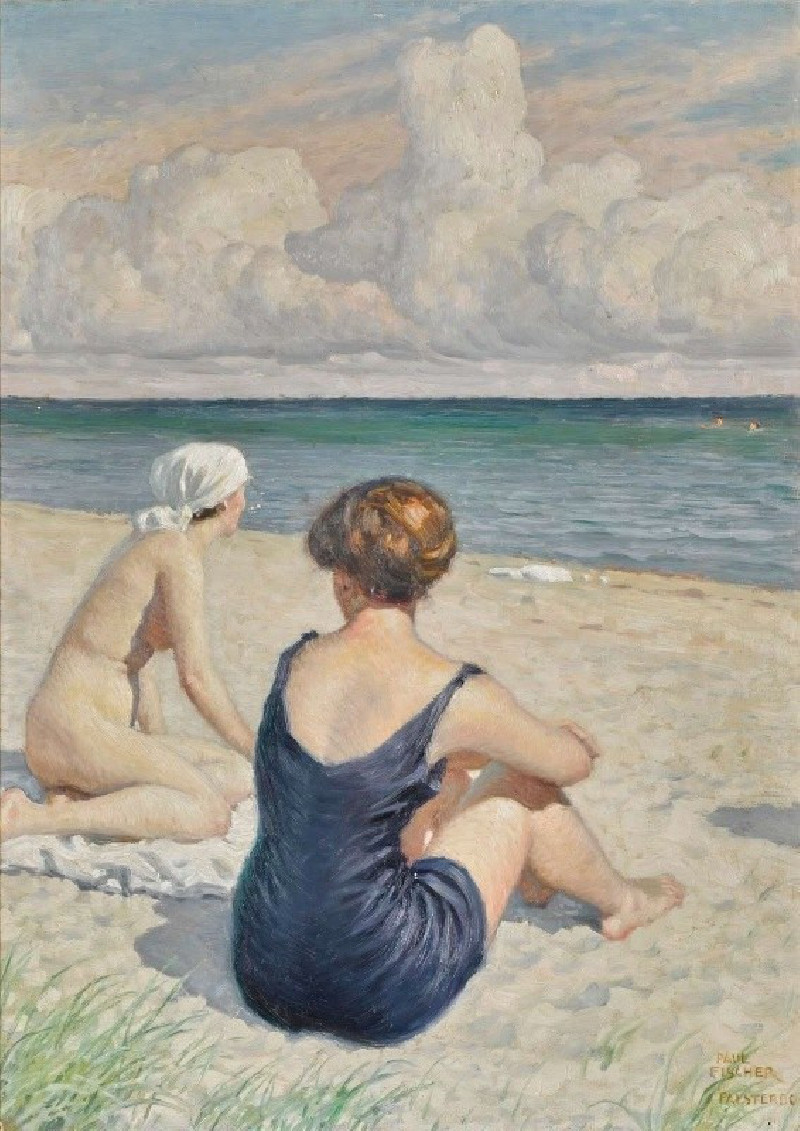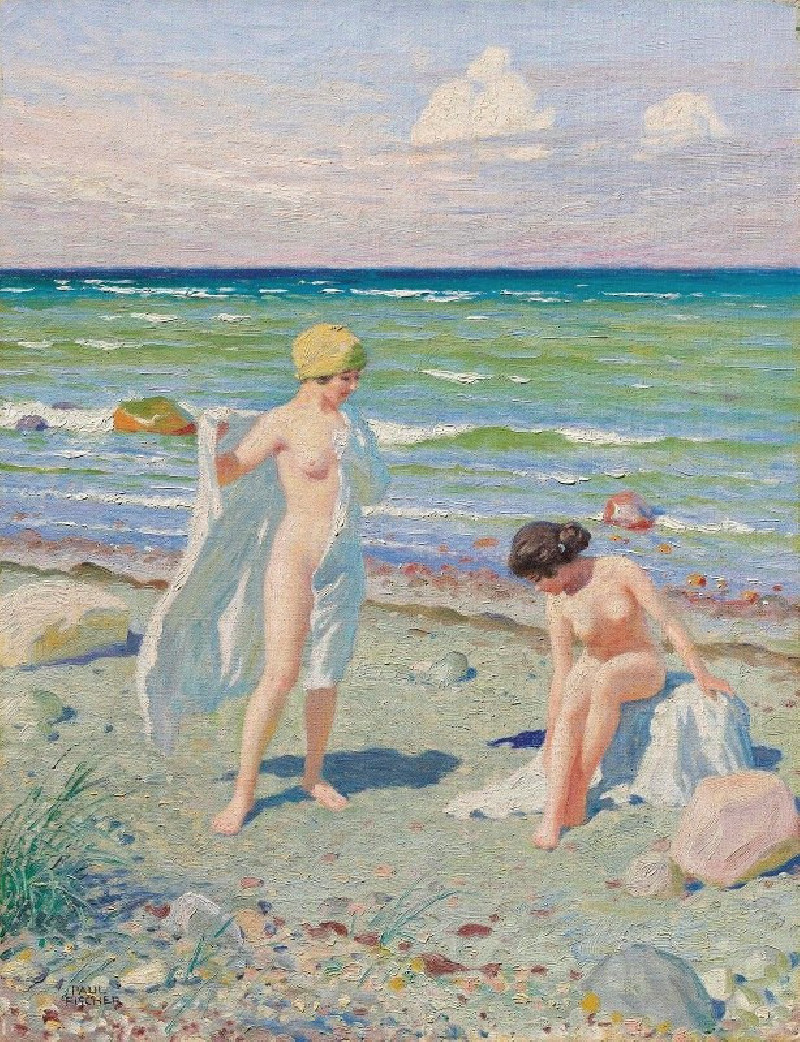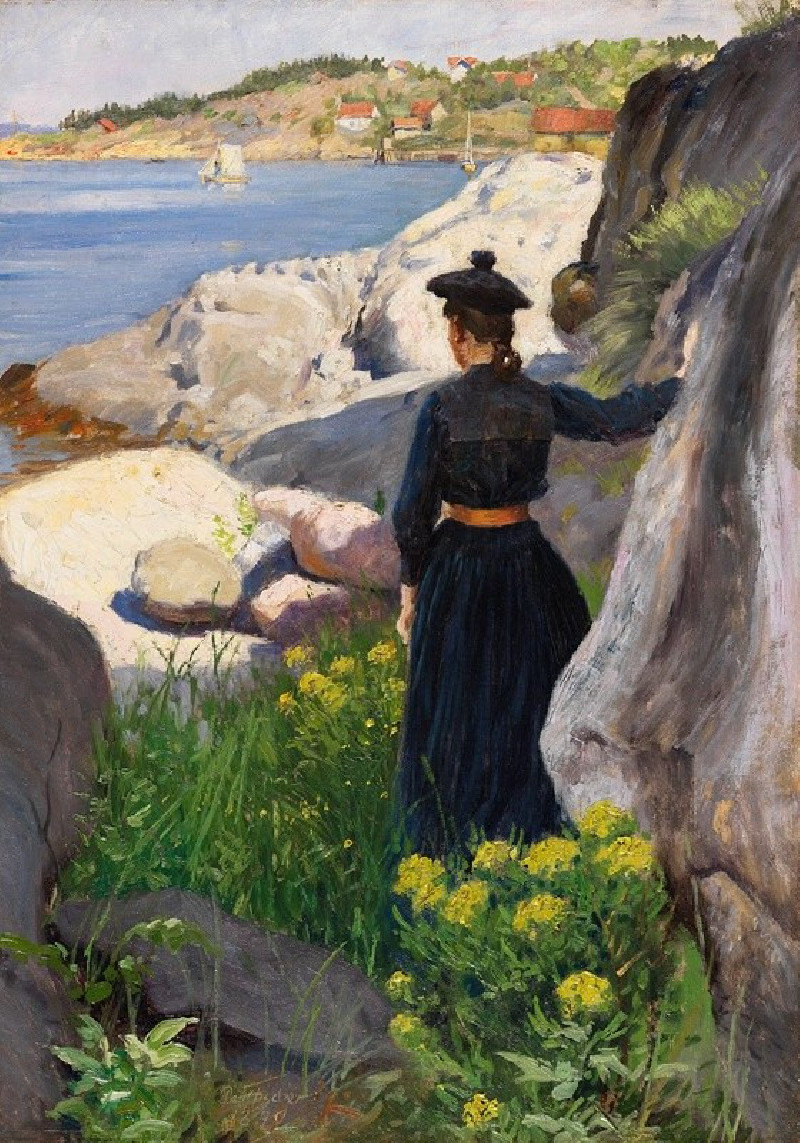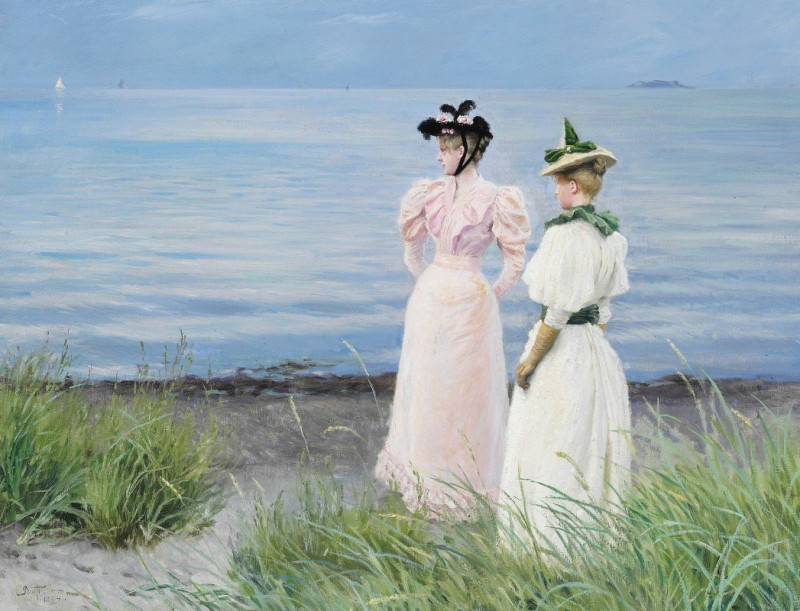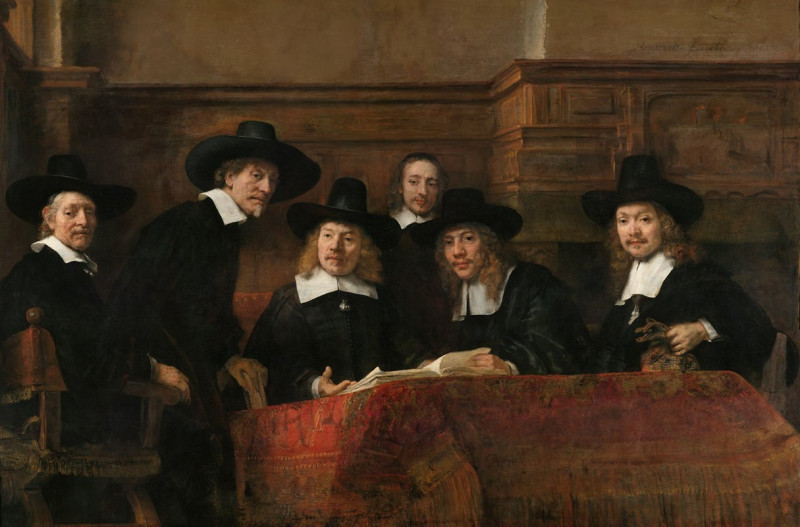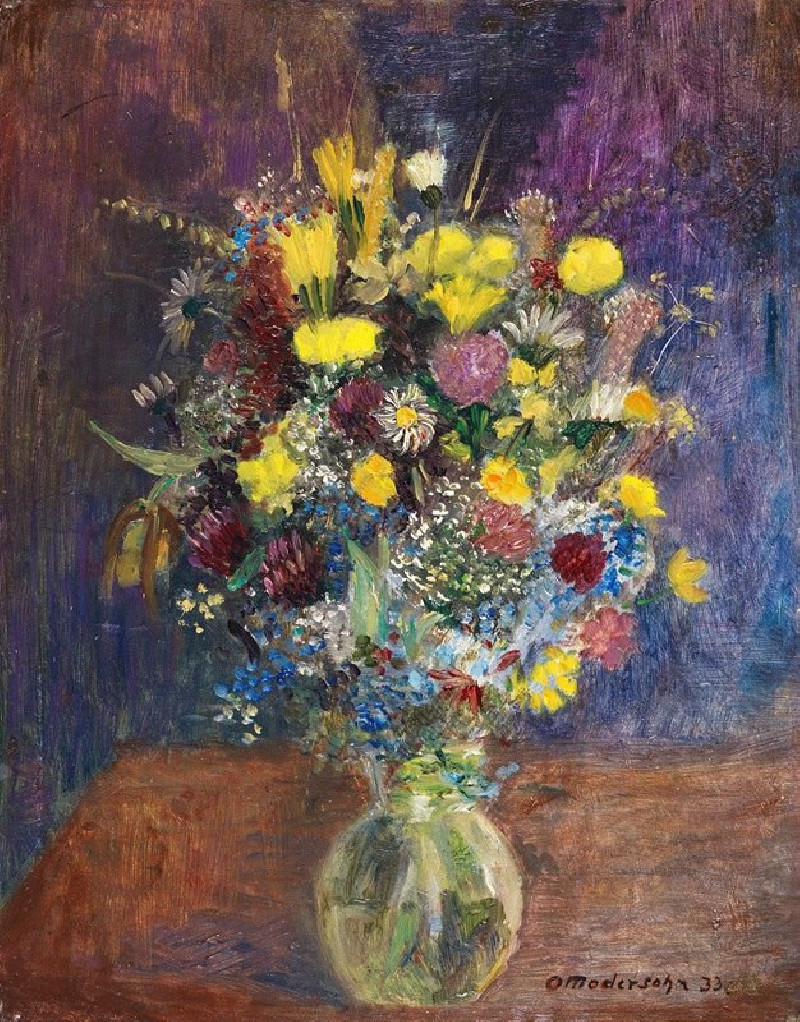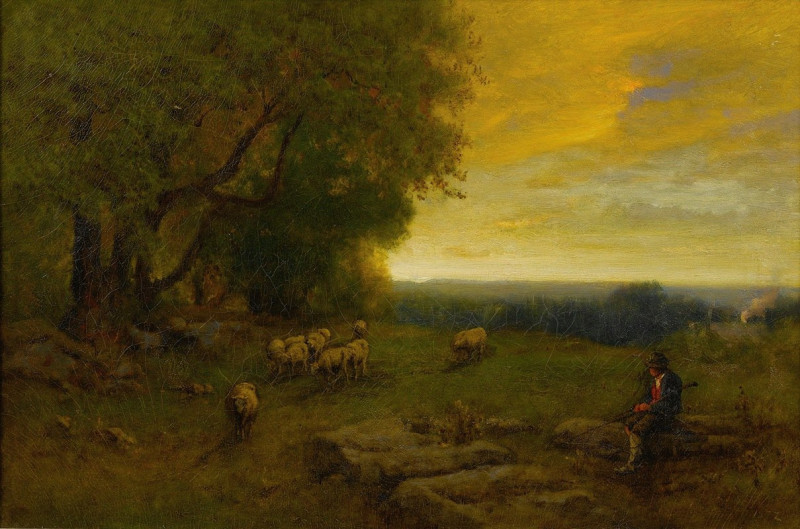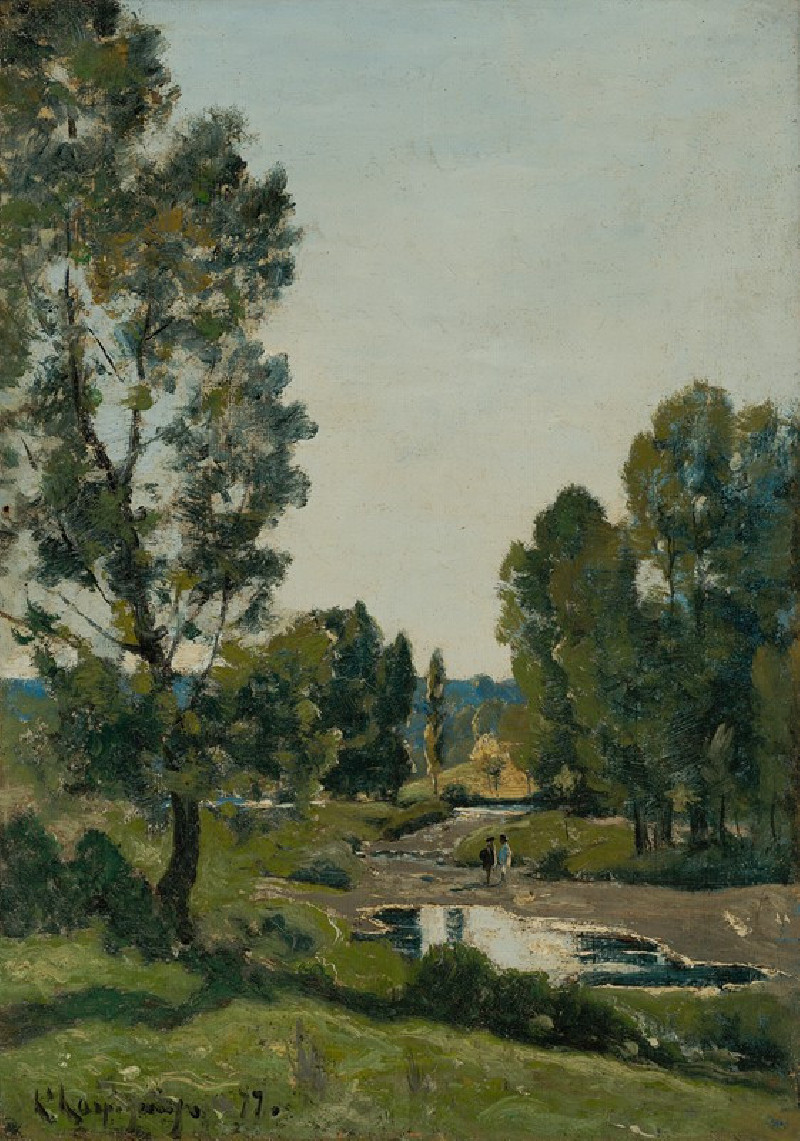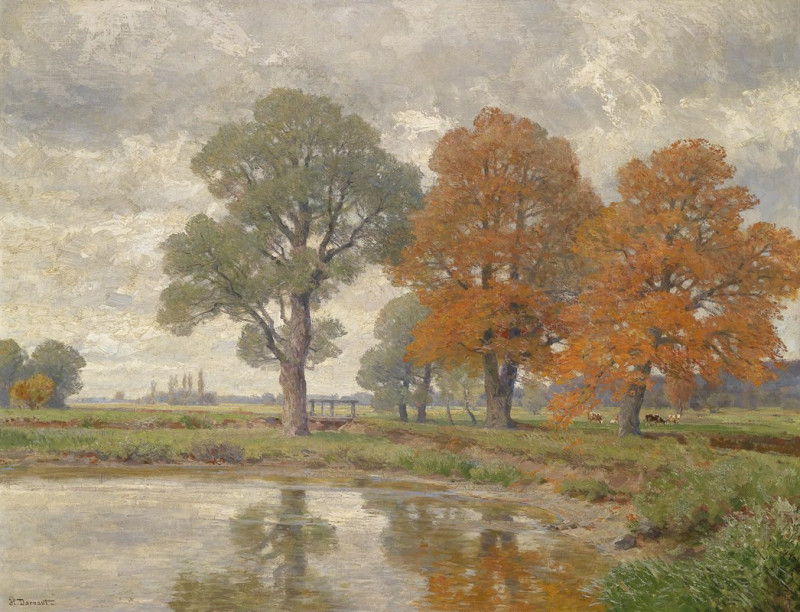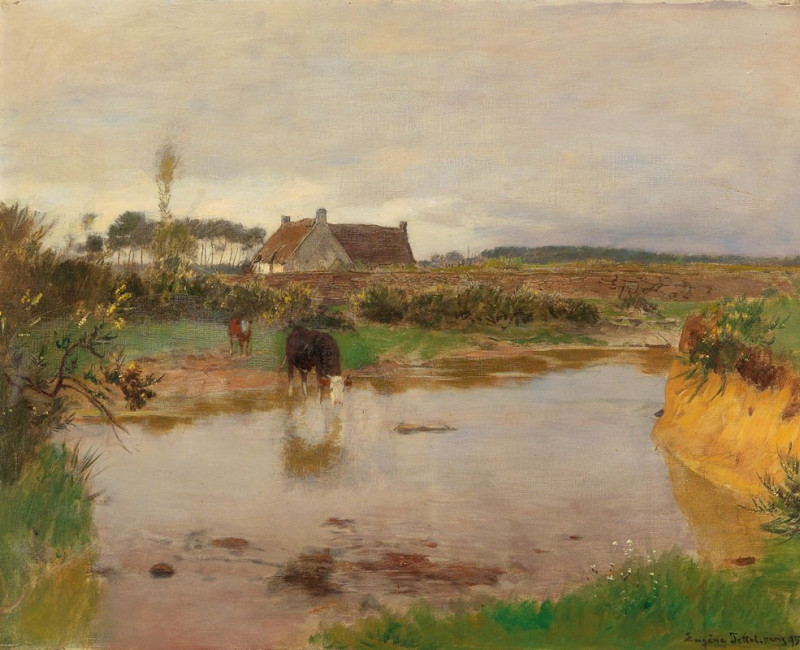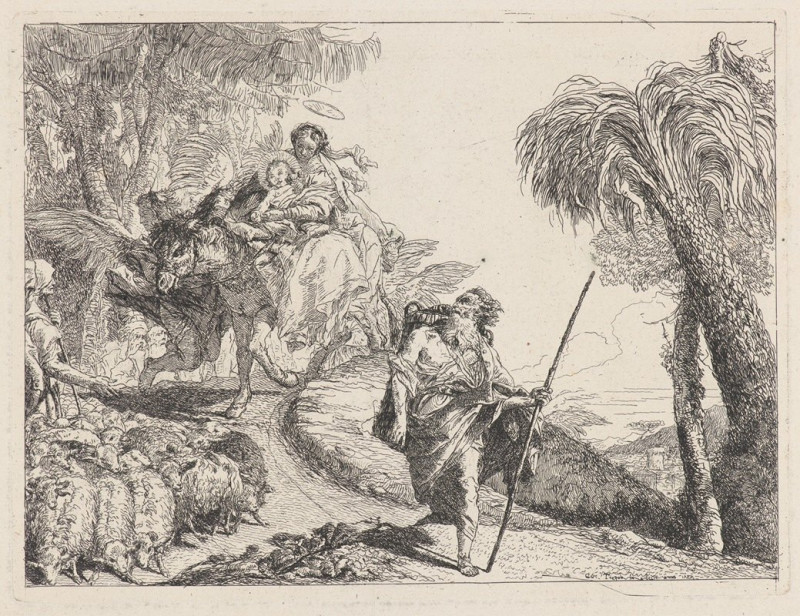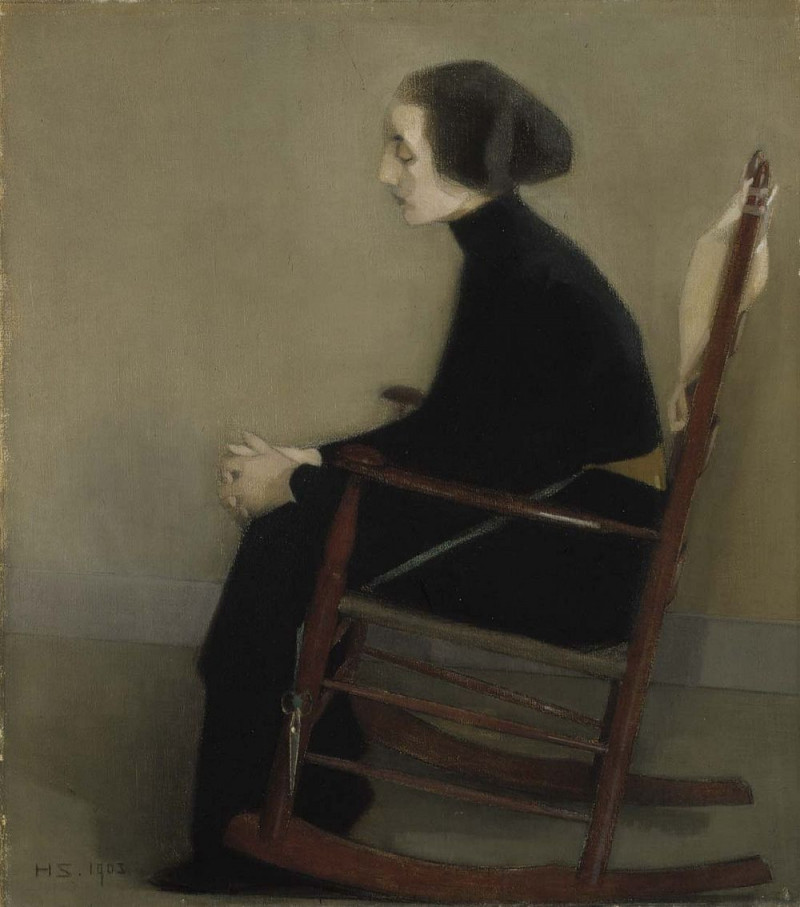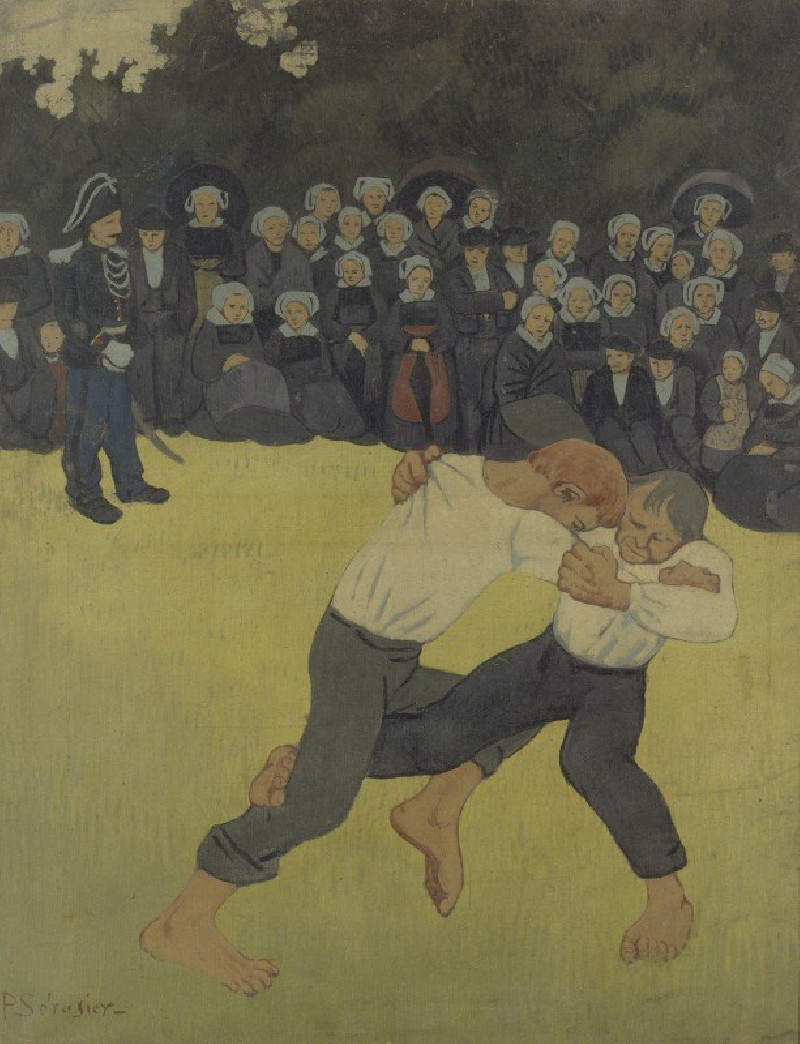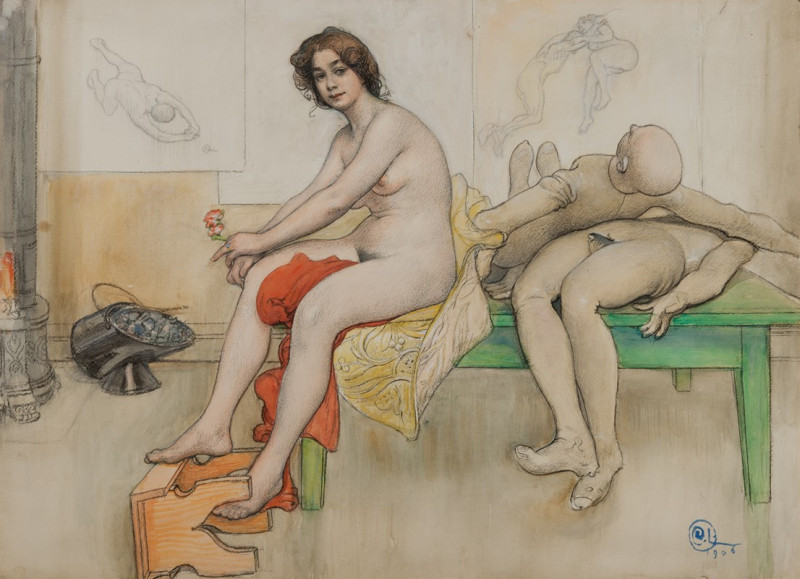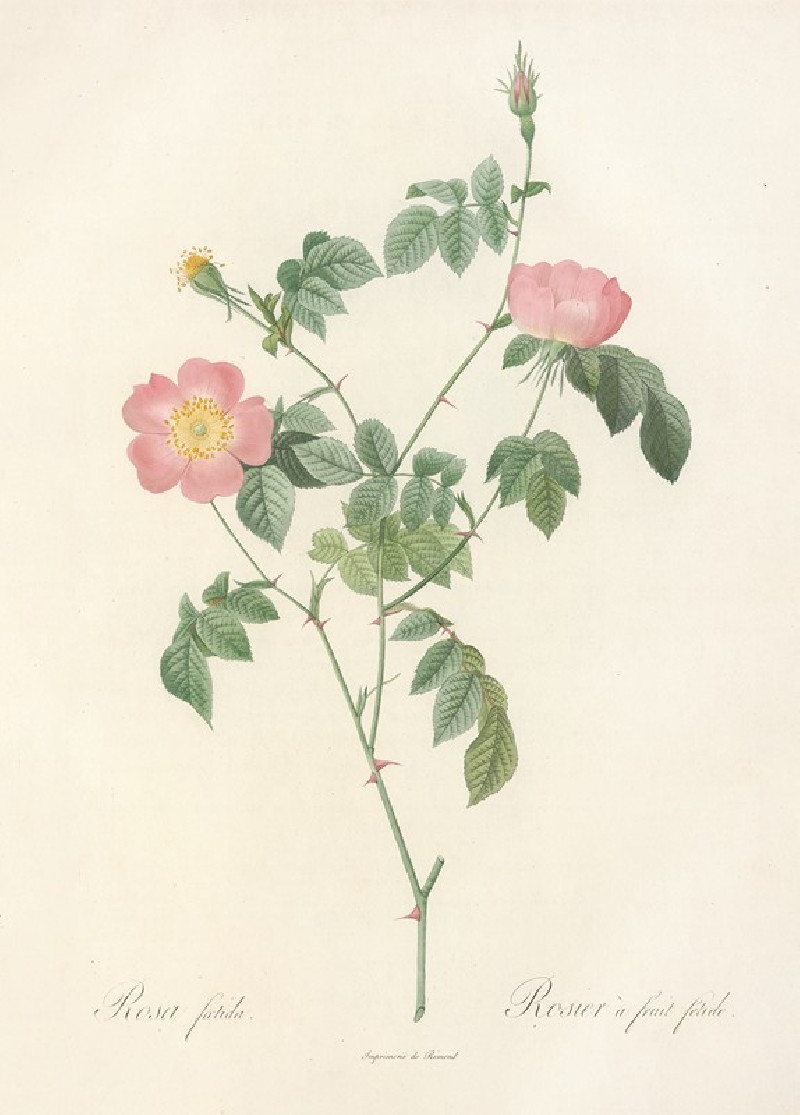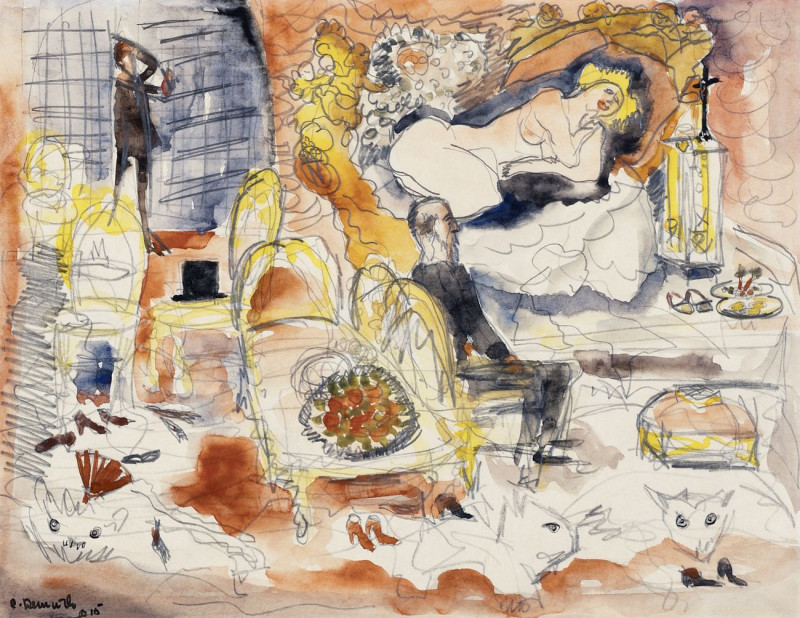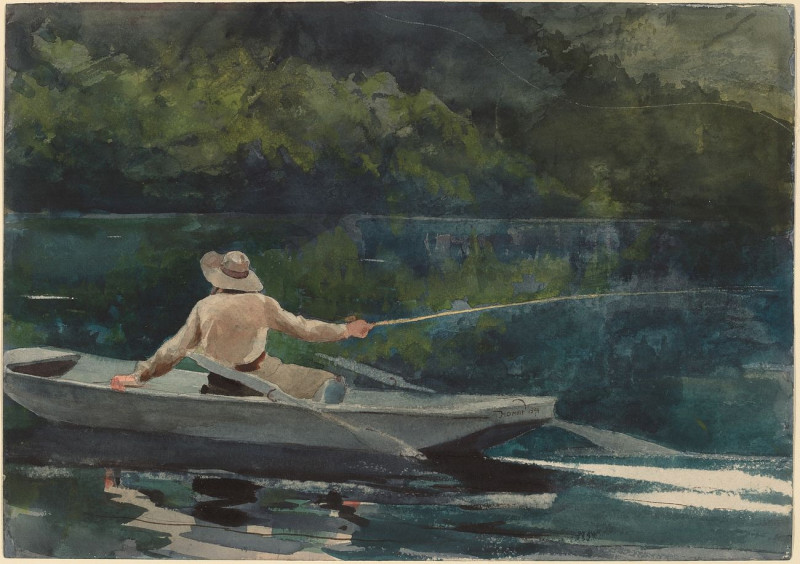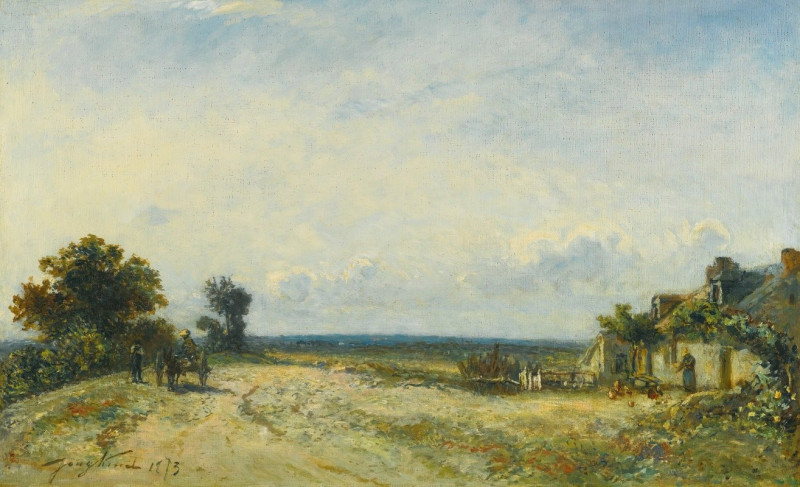Ved Sarkophagen (1929)
Technique: Giclée quality print
Recommended by our customers
More about this artwork
"Ved Sarkophagen" (By the Sarcophagus), a captivating painting by Danish artist Paul Fischer, dates back to 1929 and reveals the artist’s masterful blend of natural beauty and classical intrigue. The scene is set in a luxuriant garden laden with the freshness of nature and a thoughtful architectural element—a sarcophagus adorned with a classical relief.In this serene composition, two figures, both nude, stand at either end of the sarcophagus brimming with a myriad of vibrantly colored roses. Each figure interacts gently with their lush surroundings; one leans forward to smell the fragrant roses, indicating a moment of immersion into the sensory pleasures of the environment. The other stands contemplatively, gazing out over the verdant landscape that stretches into a soft, mountainous horizon.Intriguingly, the lush natural setting starkly contrasts with the stone sarcophagus, symbolizing perhaps the intersection of life and history, of nature's transient beauty and the lasting stone memories of the past. The artwork is rich with allegorical meaning, possibly alluding to themes of memory, legacy, and the natural cycle of life and death.The surrounding elements—baskets filled with ripe, succulent fruit and verdant foliage encroaching upon the scene—enhance the overall feel of abundance and fertility. There's a palpable richness in the texture and color of the painting, from the detailed depiction of the flora to the play of light ensuring that each element is vivid and lively."Ved Sarkophagen" invites viewers into a reflective space framed by the beauty of renaissance and an evocative exploration of the human condition amidst the cycles of nature. It is a testament to Paul Fischer's ability to convey complex emotions and narratives through strikingly beautiful and meticulously detailed works.
Delivery
Returns
Paul Gustav Fischer was a Danish painter.
Paul Fischer was born in Copenhagen, Denmark. He belonged to the fourth generation of a Jewish family which originally came from Poland. He was the son of Philip August Fischer (1817-1907) and Gustafva Albertina Svedgren (1827-83). The family was upper middle class; His father had started as a painter, but later succeeded in the business of manufacturing paints and lacquers.


